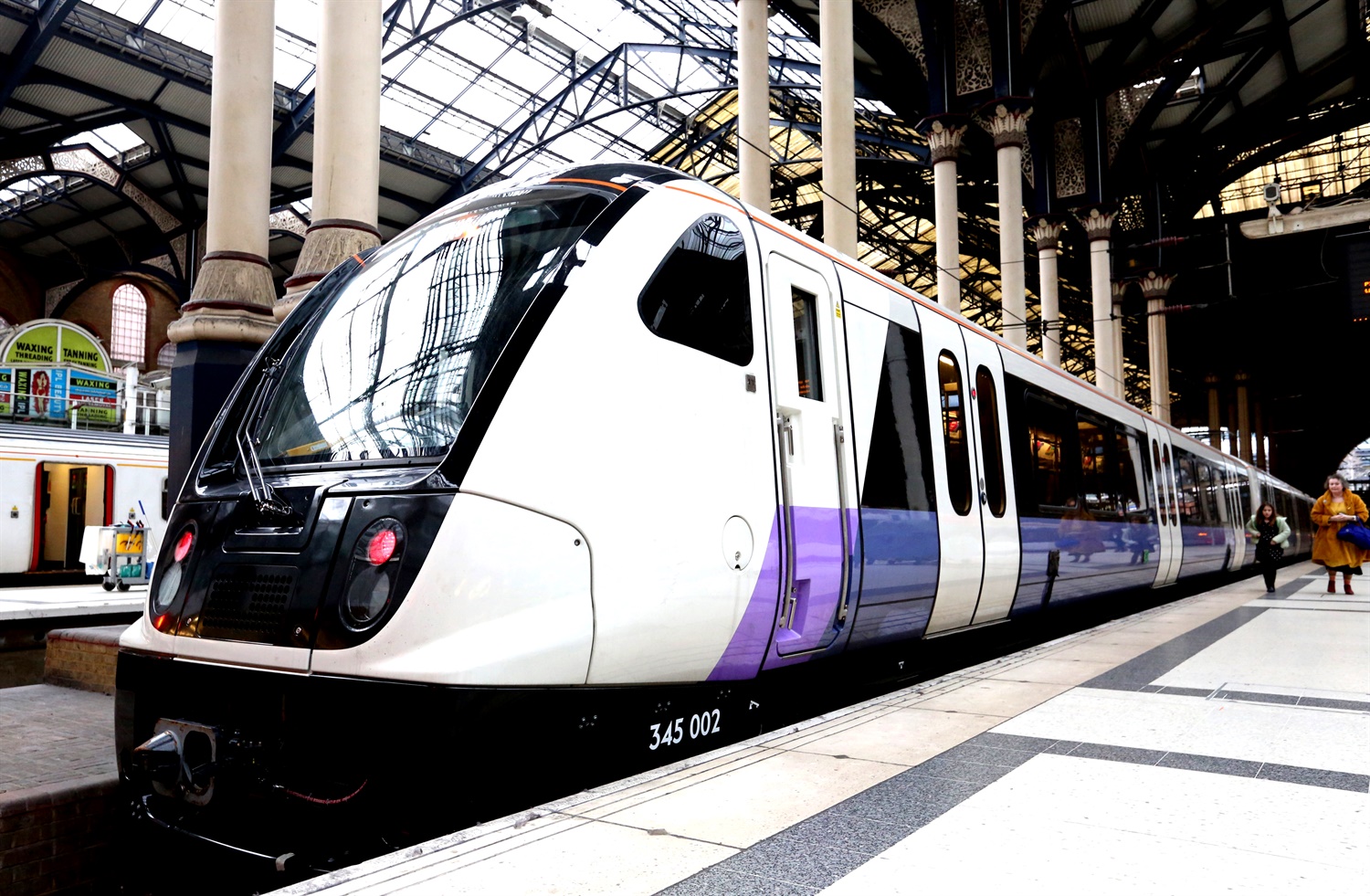04.09.17
The history of yellow
As Elizabeth Line trains prepare to become the first to run with all-black panels since the steam era, Greg Morse, lead operational feedback specialist at the RSSB, takes a look back at the fascinating history of the famous yellow front end.
Imagine being trackside on a warm summer’s morning. It’s 1952 and there’s hardly a cloud in the sky. In one direction, you can see for miles as the metals stretch out in front of you; in the other, the line curves away, disappearing down behind a bank lined with trees. It’s from that direction that the next train’s due. No problem for you as you work alone in the cess: it’ll probably be worked by a ‘Black Five’ and be audible for miles, the engine barking as it struggles up the gradient – plenty of time to get to a position of safety before it’s upon you.
Now imagine being in the same spot nine years later: it’s still bright, you can still see for miles in one direction and the line still curves away in the other. The next train’s due from the latter, only this time it’s not a ‘Five’ on the front, but a new-fangled ‘Brush 2’ – a diesel, a demon to some, a necessity to others. No time to muse on that now, though – you’ve got work to do, and not much time to do it in. You get stuck in. You’re so stuck in you almost miss the horn as the train rounds the bend, almost fail to pick up your tools, almost fail to get to a place of safety before it rumbles past...
The trouble was – in comparison to steam engines – diesels were quiet, electrics quieter still. Yet they had to come, and were coming – though you couldn’t always hear them when they did! You couldn’t always see them either, the green livery of the diesels often blending them into rural backgrounds. But what if there was some way they could be made easier to see? It would certainly help trackworkers, and help farmers using occupation crossings too.
The solution was simple: paint a ‘bright yellow panel’ to the fronts of the new locomotives and units. From 1961, it was done; it was done a bit more when the new ‘corporate BR identity’ was born a few years later, a full yellow end becoming almost a second livery colour against the cool Monastral Blue of that design.
These beacons in the dark, beacons in the distance, glowed for many years, each a testament to the safety of those on or about the line. Yet time changes everything, technology more than most.
By the early 70s, the Class 87 electrics were emerging with new central headlights, similar to those that would adorn the diesel-powered 56s a few years later. And a 1971 report noted that such lights improved the visibility of trains to track workers even more.

And when the 47s converted for push-pull working between Edinburgh and Glasgow emerged with a new design of lamp from the end of 1979, it set a precedent that would be compounded five years later, when a call came for the many front lighting systems in use on BR to be standardised. The same report also contained the first record of the current arrangement of two headlamps, two marker lamps and two tail lamps on each end of each loco or traction unit.
As the 80s drew on, more and more classes emerged with square-cased headlamps, though the yellow end remained. Nowadays, headlight technology has improved so much that, if a lamp arrangement compliant with the minimum requirements in the Technical Specifications for Operability (TSI) – which requires two headlamps, three marker lamps and two tail lamps, all of specific luminescent properties – is used on a loco or unit, then the yellow end can be any colour (though of course ‘any colour’ still includes yellow, and many may decide to stick with that golden hue for continuity’s sake or if it suits their particular needs better). Note that a company changing to ‘non-yellow’ must consult all affected parties and undertake a suitable and sufficient risk assessment like the one set out in the Common Safety Method on Risk Evaluation and Assessment Regulations. All this has been embodied in new audibility and visibility requirements for rail vehicles within Railway Group Standard GM/RT2131, which came into force in March 2016.
Of course, vehicles with headlamps that are not TSI-compliant will still require a yellow front end. Similarly, yellow plant still has to be yellow all over, and shunting locomotives and snowploughs will still need forward-facing surfaces to be painted yellow with black chevrons where it’s reasonable to provide them.
It looks weird after all this time, but even the black ends of the new Elizabeth Line units should provide sufficient contrast with their headlights to enhance their visibility to staff on the ground. But the need to maintain those headlights will be more important than ever before going forward.
The countdown is on to get your entries in for this year’s UKRIA. Closing date is 25 September. ENTER NOW!